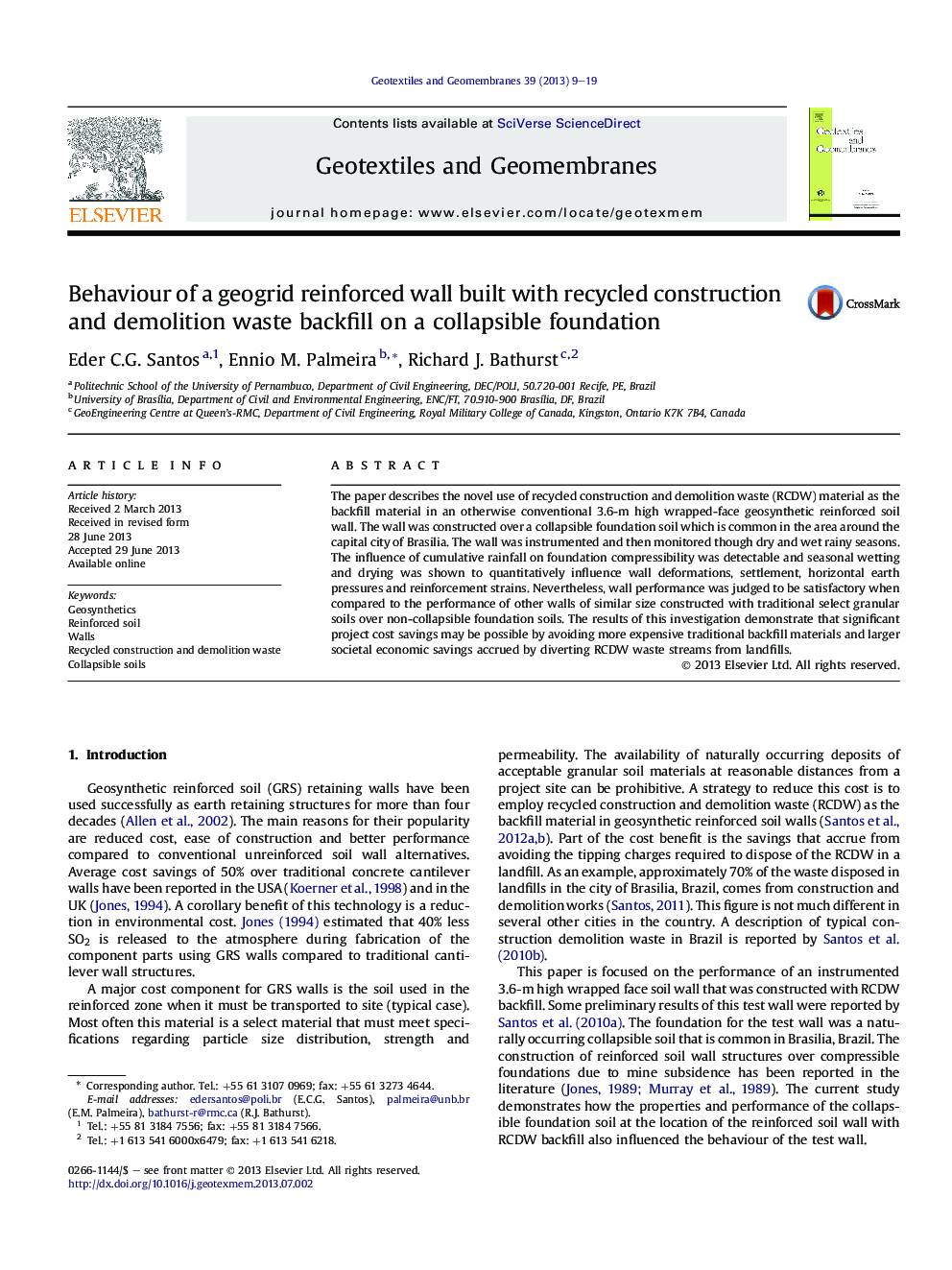| Article ID | Journal | Published Year | Pages | File Type |
|---|---|---|---|---|
| 6747025 | Geotextiles and Geomembranes | 2013 | 11 Pages |
Abstract
The paper describes the novel use of recycled construction and demolition waste (RCDW) material as the backfill material in an otherwise conventional 3.6-m high wrapped-face geosynthetic reinforced soil wall. The wall was constructed over a collapsible foundation soil which is common in the area around the capital city of Brasilia. The wall was instrumented and then monitored though dry and wet rainy seasons. The influence of cumulative rainfall on foundation compressibility was detectable and seasonal wetting and drying was shown to quantitatively influence wall deformations, settlement, horizontal earth pressures and reinforcement strains. Nevertheless, wall performance was judged to be satisfactory when compared to the performance of other walls of similar size constructed with traditional select granular soils over non-collapsible foundation soils. The results of this investigation demonstrate that significant project cost savings may be possible by avoiding more expensive traditional backfill materials and larger societal economic savings accrued by diverting RCDW waste streams from landfills.
Related Topics
Physical Sciences and Engineering
Earth and Planetary Sciences
Geotechnical Engineering and Engineering Geology
Authors
Eder C.G. Santos, Ennio M. Palmeira, Richard J. Bathurst,
